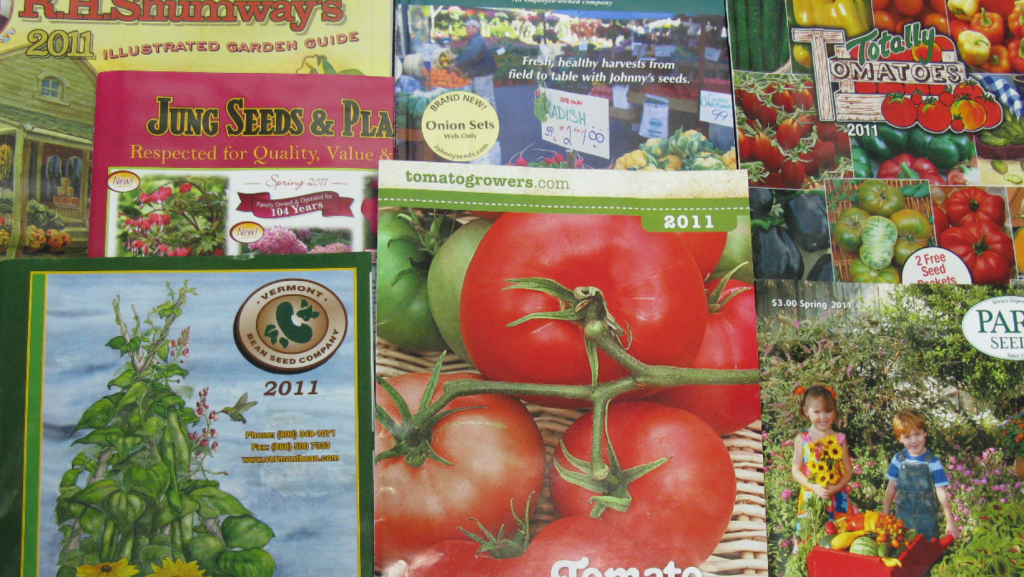What to expect when you are expecting (seed catalogs)

For gardeners, the gift buying season isn’t ending, it is just beginning! And these gifts aren’t for family and friends. These are gifts for the gardeners themselves. The seed and plant catalogs have started pouring in!
I know many gardeners, including myself, put that stack of catalogs next to our easy chair or at the bedside table. We slowly turn every page, lingering over every vivid photo of the old and new varieties of every vegetable, herb, flower and more.
And just like a teenage boy looking at a fast-food menu, gardeners want to order one of everything. But usually, our eyes are bigger than our garden space, and what about all those terms? Bare root, hybrid, heirloom, and, of course, the most controversial — non-GMO. What do they all mean?
Today I am dedicating the column to clearing up the confusion and, more importantly, helping you to understand what you are getting into, garden wise. Let’s start with the easiest one: perennial.
I am sure most everyone knows what perennial means. I often ask audiences when I give a talk, that definition. And the answer is, “Lives more than one year.” (I always add, if I don’t kill it first.) But did you know many perennials, when planted from seed, aren’t going to flower until their second season?
Starting plants from seed can be one of the most cost-saving garden tasks, but if you want flowers first season, for perennials you may want to start with a plant instead. Same is true for flower seeds labelled biennial. This includes flowers like hollyhocks (Malva), foxglove (Digitalis), pinks (Dianthus) and delphiniums.
I get several questions every year on why these plants the gardener started easily from seed, but no flowers.
Sometimes, the gardener shares that they keep pulling these plants out because they won’t flower. Now hold on there; just give them their second year, which is when they put on their show. Again, if you want flowers the first year, you may consider purchasing plants instead.
Now the hot topic– GMO, or non-GMO? We aren’t going to get into a discussion of the political/ethical side of these seeds and plants. But it may surprise you, that even though some seed catalogs tout “all our seeds are non-GMO,” guess what? GMO seed is not available to home gardeners.
Side note, that doesn’t mean you aren’t eating GMOs everyday (a topic for another day), but when seed catalogs tout that term, it is similar to when foods label themselves “gluten free” that have no wheat in them at all; they never had gluten to start with. That is why those of us who work in agricultural and horticultural education have job security. There is so much education about science and food that needs to be shared.
Seeds that are labelled hybrid, means that plant has two different parent plants, chosen for specific characteristics. Nature has been hybridizing forever in a random way. Scientists, using natural yet controlled pollination, combine the best of the best to get the desired plant. Take the celebrity tomato — my personal favorite “modern” tomato. It is disease-resistant, grows like a bush (instead of an unending vine) and produces medium-sized fruit fairly early.
Heirloom seeds are not, as many people think, always the best. When I do talks on vegetable growing, I always can see those particular vegetable gardeners, just waiting to ask me THE question after my talk. They don’t dare ask for others to hear. In a hushed tone they say, ‘I didn’t want to say. …”
They are so relieved when my answer is yes, because that is part of being an heirloom. Heirloom means several things: First, the image of immigrants bringing some seeds wrapped in a hankie from the “old” country (whatever your old country was) is part of what heirloom means. These were seeds that did well somewhere and were passed down.
Heirloom seeds are also considered stable, or you will see the term “open-pollinated.” These plants have stable genetics. They have been around a long time and do not, like hybrids often do, revert to one of their parents’ traits if you save the seed.
Do they taste better? Maybe, maybe not. My heritage is Polish. So anytime I see “Polish heirloom,” I used to want to try them. But guess what? Maybe that seed passed down over generations in Poland was done so because that was the only one that grew well and produced heavily. Maybe it wasn’t the tastiest, or maybe it was. Your taste buds will tell you.
Also, heirlooms aren’t usually disease-resistant. That is where science came to select and breed plants that were naturally resistant to something to create new varieties. When you look at the tomato listings you will often see (VFM) noted. This acronym stands for Verticillium, Fusarium, and Tobacco Mosaic Virus resistance. You won’t see that with heirlooms.
That said, I grow a ton of heirloom plants, from roses to hollyhocks to many vegetables. Take the Brandywine tomato. It gets every disease out there, takes forever to flower and I don’t get my first gigantic 3-pound fruit until late July, and once off the vine, it lasts about four hours. It doesn’t store well. But there is a reason it wins every tomato tasting contest. The skin is so thin, you can peel it with your fingernail, and the taste is extraordinary.
The choice is literally in your hands, in those seed catalogs. The options are almost endless. And if you have any questions about anything gardening/nature, that is what I am here for — year-round.
You can email me at [email protected], or call the Will County Extension Office at 815 727 9296.